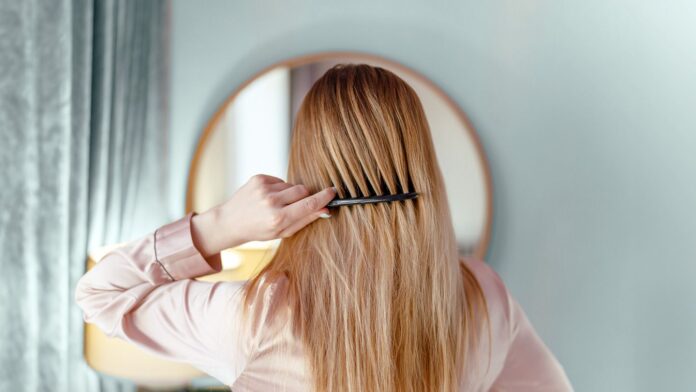It’s common to think about the health of your hair. But you might be missing clues that your hair is revealing about your health.
Research shows that changes in your hair’s look, texture, or thickness can be signs of underlying health conditions. Here’s what you should know about your hair changes and how they may relate to health problems, genetics, stress, or nutritional deficiencies.
1. Stress and Genes Can Make You Go Gray
Going gray is a natural part of aging, because your hair follicles produce less color as you get older.
“Oxidative stress [when cell-damaging free radicals inhibit the body’s repair processes] may affect pigment-producing cells,” says Paradi Mirmirani, MD, a dermatologist with the Permanente Medical Group in Vallejo, California.
2. Brittle Hair Could Be a Sign of Cushing’s Syndrome
Brittle hair is one symptom of Cushing’s syndrome, a rare condition caused by too much cortisol, the body’s primary stress hormone. But there are many other more obvious symptoms of Cushing’s syndrome, including high blood pressure, bruising, fatigue, and back pain, Mirmirani says.
If medication is causing Cushing’s syndrome, treatment may include changing the dose. If a malignant tumor is the cause, surgery, chemotherapy, or radiation therapy may be necessary.
3. Thinning Hair Could Be a Sign of Thyroid Disease
People who have hypothyroidism, a condition that occurs when your thyroid gland doesn’t produce enough thyroid hormones, might notice increased hair shedding and a change in hair appearance and texture, Mirmirani says.
- Neck pain
- Dry skin
- Jaundice
- Weight gain
- Slow speech and movement
- Enlarged tongue
- Sore throat
A thyroid-stimulating hormone (TSH) test will diagnose the condition, and treatment involves medications.
4. Hair Loss Could Be a Sign of Anemia
If you’re suddenly noticing a lot more hair in your hairbrush or on your shower floor, it could be a sign that you have iron-deficiency anemia and may warrant testing.
Mirmirani says she is more likely to order anemia blood tests for people who are vegetarian or for women who have heavy periods, both of which increase the chance that hair changes are because of low iron.
It’s not completely known why low iron can cause hair loss. But iron is critical for many biological and chemical reactions, perhaps including hair growth, says Rebecca Baxt, MD, a dermatologist in Paramus, New Jersey. If your doctor determines that you are iron-deficient, eating more foods that are high in iron or taking an iron supplement might help with hair loss, she says.
5. Hair Loss Could Indicate a Protein Deficiency
- Nonfat Greek yogurt
- Lentils
- Eggs
- Wild salmon
People who have gastrointestinal difficulties or who just had gastric bypass surgery may have problems digesting protein. Consult your healthcare professional before you change your diet if you have these conditions.
6. White or Yellow Flakes Could Be Dandruff
Other causes include:
- A yeast-like fungus called malassezia
- Dry skin
- Sensitivity to hair products
- Psoriasis
- Eczema
How to Avoid Damaging Your Hair
Although hair issues can be symptoms of other health conditions, highly treated hair may mask those problems and make it difficult to see or feel what your hair can tell you about your health.
Mirmirani says that patients more commonly complain about damage from coloring and using heat to style hair.
Too much heat from daily flat-iron use or blowouts can make your hair dry, brittle, and hard to maintain, says Tania Moran, a licensed hairstylist at Swank Hair Salon in New York City. Moran recommends using no more than one hot tool per day; infrequent double-heat processes are okay, but not daily.
Whenever you’re applying heat to your hair, always use products with protective ingredients, she adds.
“Serums and shine drops tend to have qualities that preserve the hair when using direct and indirect heat,” Moran says.
Getting your hair professionally colored is unlikely to cause much damage, Moran says, but bleaching your hair and using hair dye at home can have adverse effects. You can mitigate any damage to your hair by using the right products.
“After color treatment, use proper color-preserving and moisturizing shampoo,” Moran says.
The Takeaway
- Hair loss, change in hair texture, and loss of hair color can be symptoms of serious health conditions.
- Going gray could be a sign of stress — or simply genes or aging.
- Dandruff typically is not serious and often can be treated with shampoo.
- Avoid overtreating your hair, which can cause dryness and brittleness that resembles symptoms of other health conditions.

